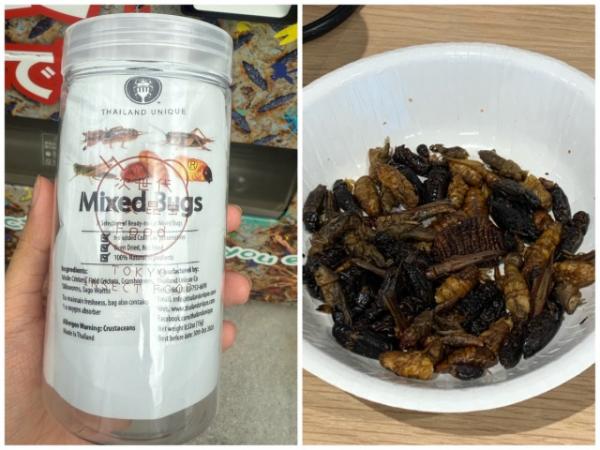Finally, the insect tasting edition has arrived.
Someone from another department expressed concern, “Eating insects from the river… aren’t you pushing yourselves too hard?”
But after a three-year gap, we want to show that “The new editorial team has guts too!”
It’s more about stubborn determination than just stating intent (laughs).
It’s not about whether we’ll do it or not, but “We have to do it!”
And this time it’s insect “eating.”
Since they’re sold as food, safety is guaranteed!
Before the tasting, as a preliminary step… did you know that insect consumption is actually being promoted?
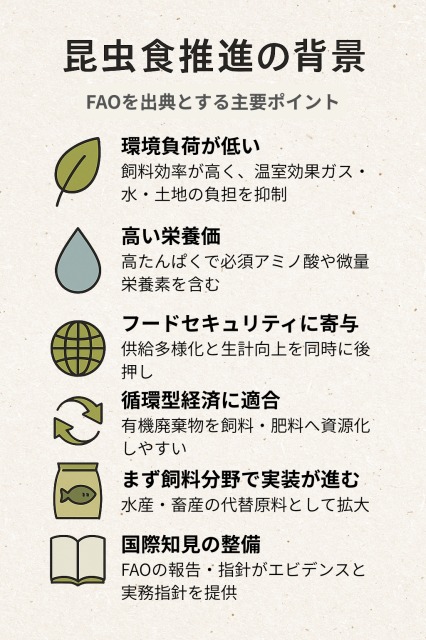
Following the 2013 FAO report, Japan’s 2021 “Green Food System Strategy” positioned insects as “feed alternatives and new materials,” clearly stating policies to advance research and utilization.
The strategy’s positioning is also outlined in House of Councillors documents.
Around 2020, public-private partnerships accelerated (including the establishment of the Food Tech Public-Private Council).
In that flow, trials in school lunches and movements by domestic startups became topics of discussion, with social acceptance coexisting with both support and opposition.
However, there are various reasons why insect eating hasn’t become popular, but the biggest one is
the thick “wall of disgust and custom.”
Right…?
We will investigate “What’s it actually like!?”
*Viewer discretion is advised for the following.
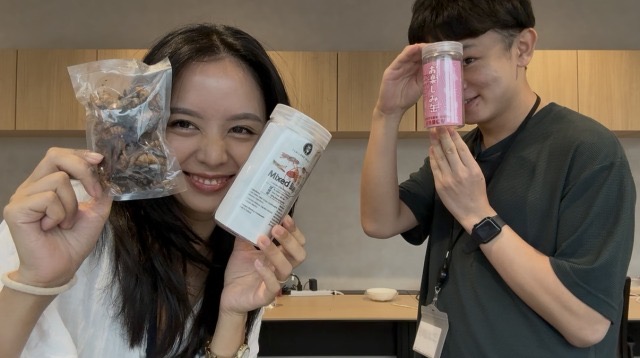
At this point, we were still in high spirits…

The contents of Mixed Bugs. The shapes are intact, and you can make eye contact.
Opinions were divided on the smell.
One person = Aromatic, nutty scent.
Looks delicious.
Another person = Smells like crunchy dog food.
Might not like it.
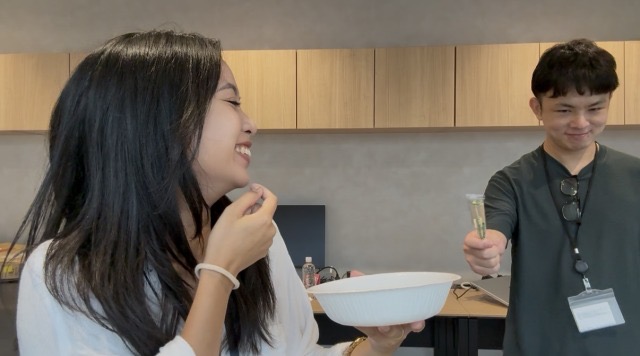
One person extends chopsticks with a determined face.
The tasting begins!! First up, this one.
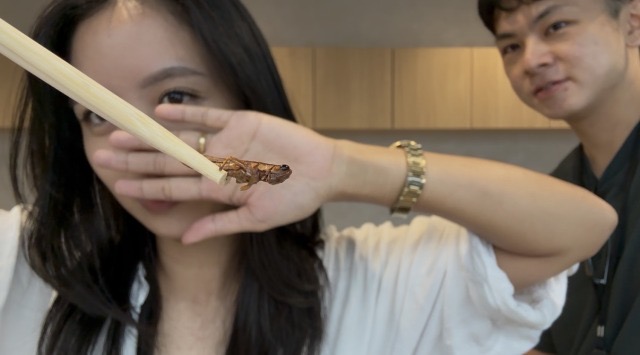
Grasshopper!!
Visually, it appears dried and crispy.
Let’s see the reaction.

You can almost hear the voice saying “What is this?!”
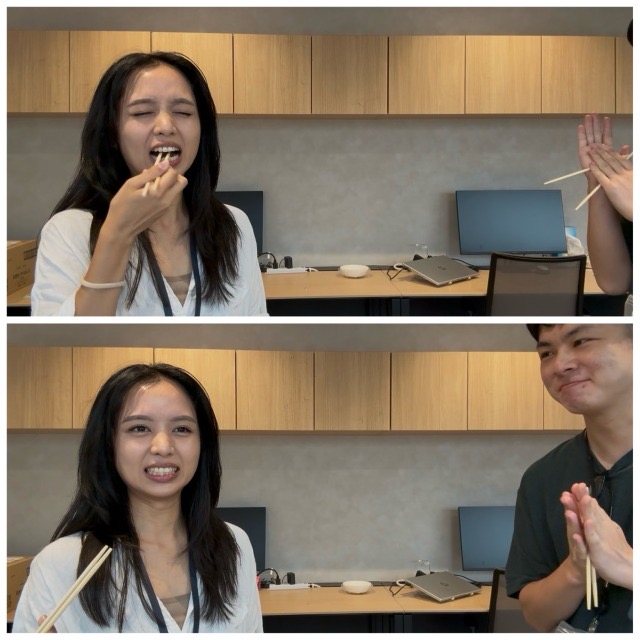
The other person is chewing but not really breaking it down.
Thoughts on the taste?
One person = Tastes like small fish/almonds, a faint small fish flavor.
Other person = Dog food…
The texture is like a light, crispy snack.
Even when chewing, the feeling doesn’t disappear; it just keeps being there no matter how much you chew.

Silkworm pupa!! The other person should try to stop making that worried face.
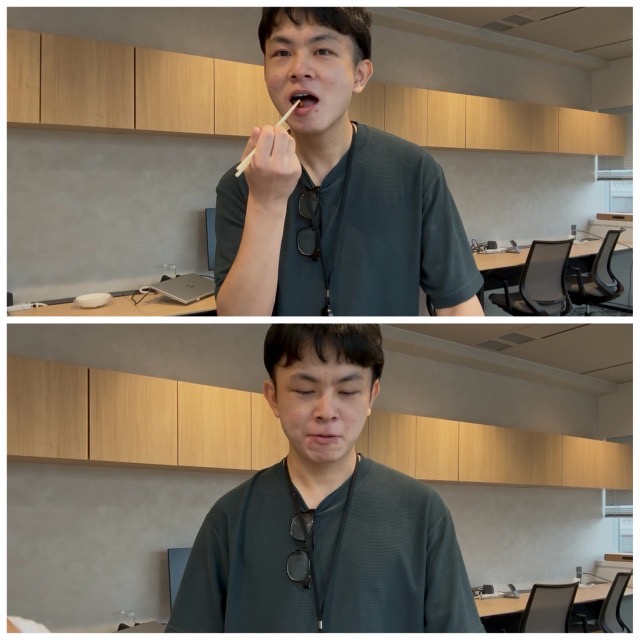
One person is already accepting it.

The other person still can’t accept it.
There was no change in taste, but the pupa

